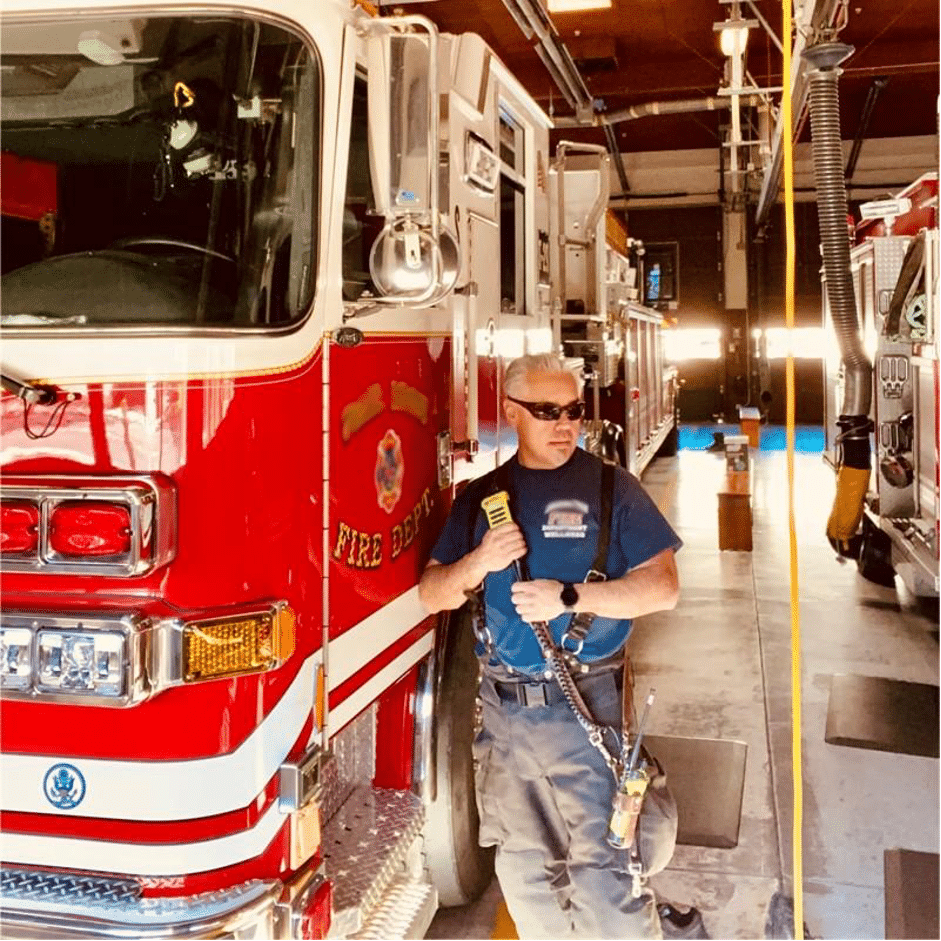When Jonathan Collazo, the CEO of Ostrich Air’s Firebot Labs, approached Fire Engineer and Hazmat Specialist Moises Estrada about his new firefighting drone in September, 2022; Estrada was simultaneously skeptical and intrigued.
As the Unmanned Aerial Systems project coordinator for the San Jose Fire Department, Estrada had seen many prototypes of drones that claimed to be equipped with thermal imaging cameras and sensors to locate victims and assess hazards.
Unfortunately, none of them had met his lofty expectations and rigid requirements in the field. But when he saw the demonstration of Iroh, Firebot Labs firefighting drone, he was amazed by its performance and capabilities.
Iroh is a sleek, agile, heat, smoke, and water resistant flying autonomously while deploying high definition 3D thermal cameras. Its state of the art sensors detect and locate fire sources, assess the situation, and deliver real time data to his firefighters’s handheld digital devices.
Flying In Formation
Iroh can also communicate with other Firebots and coordinate their actions to form a swarm of firefighting drones that can tackle large-scale wildfires like the ones in California and Canada.
“These drones get us a visual of what’s happening faster so we can start making strategic and tactical decisions before we arrive on the scene,” said Estrada. “This gives us the ability to look at what type of building structure we’re dealing with, the size of the fire, any external hazards that there may be like downed power lines or people hanging off the side of a building.”
He added that 911 phone calls are only as good as the person providing the information so there will typically be a lot of
superfluous information that is not helpful or sometimes even dangerously erreoneous.
Estrada is especially excited about the fact that drones invented and developed by Ostrich Air’s Firebot Labs give his team the intelligence it needs to fight fires more efficiently. He is sold on the distance it flies even in inclement weather and the stunning visual clarity it delivers to their iPads.
Combating Record Breaking Temperatures
As temperatures rise due to the greenhouse effect, the Earth’s climate becomes more unstable and unpredictable. This can lead to frequent and severe droughts, floods, heat waves, storms, wildfires, and other natural disasters.
Droughts are especially harmful for natural resource conservation, as they reduce the availability and quality of water for humans, animals, and plants, threatening the delicate balance of our ecosystem.
“A big part of the problem has always been that we use a lot of water on these fires and we’re directing limited resources into a smoking environment, where we can’t see where the water is going,” he said. “With autonomous drones we get an immediate validation that we’re hitting the right spot.”
But preserving precious natural resources isn’t the only priority. Human resources are limited too. Estrada sighed, threw his hands up in the air and declared “We simply can’t throw more people at
the problem. We’re maxed out. There’s not much more we can do until we figure out some other some other mechanism for fighting fires.”
He underscored the importance of leveraging drone technology armed with artificial intelligence to extinguish fires faster so his team spends less time on the scene and firefighters are freed up to run other calls.
Reducing The Impact Of A Big Fire
Estrada refers to situations where many individual fire department “companies” are deployed to one scene as the “trickle down effect.” It means that a single incident takes away from their collective ability to respond to dozens of emergency calls, exponentially aggravating the tragic repercussions of the initial disaster.
“We have to call in other outside agencies to come in and backfill for us. And even though we are in a large city, and we do have a lot of resources, the need for our response is rather crucial, especially if somebody’s having a heart attack or cardiac arrest and every second literally counts,” Estrada explained.
He came to the conclusion that because drones from Firebot Labs would empower his team to spend less time on tasks, firefighters on the front lines can “clear faster” and “release units faster, so we can do our job better.” So that’s why he is convinced that Collazo’s drones will have a radical impact on the firefighting industry.
Designed for Firefighters By Firefighters
In fact, Moises was so impressed by the breakthrough innovation and disruptive potential of Firebot Labs drones that he agreed to join the Firebot Labs team as a consultant and tester. Now he is on a mission to save lives and help revolutionize the field of firefighting.
“From my frequent interactions with Ostrich Air and Firebot Labs, I learned that they want to simplify complex problems with drone technology. They create amazing robotics and AI that are easy and intuitive to use, even for firefighters who may not be familiar with such sophisticated devices,” he said with a knowing smile.


